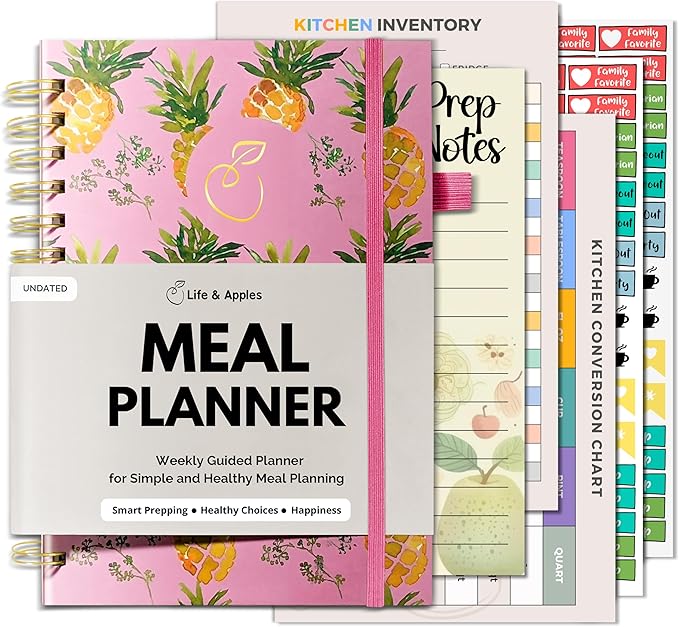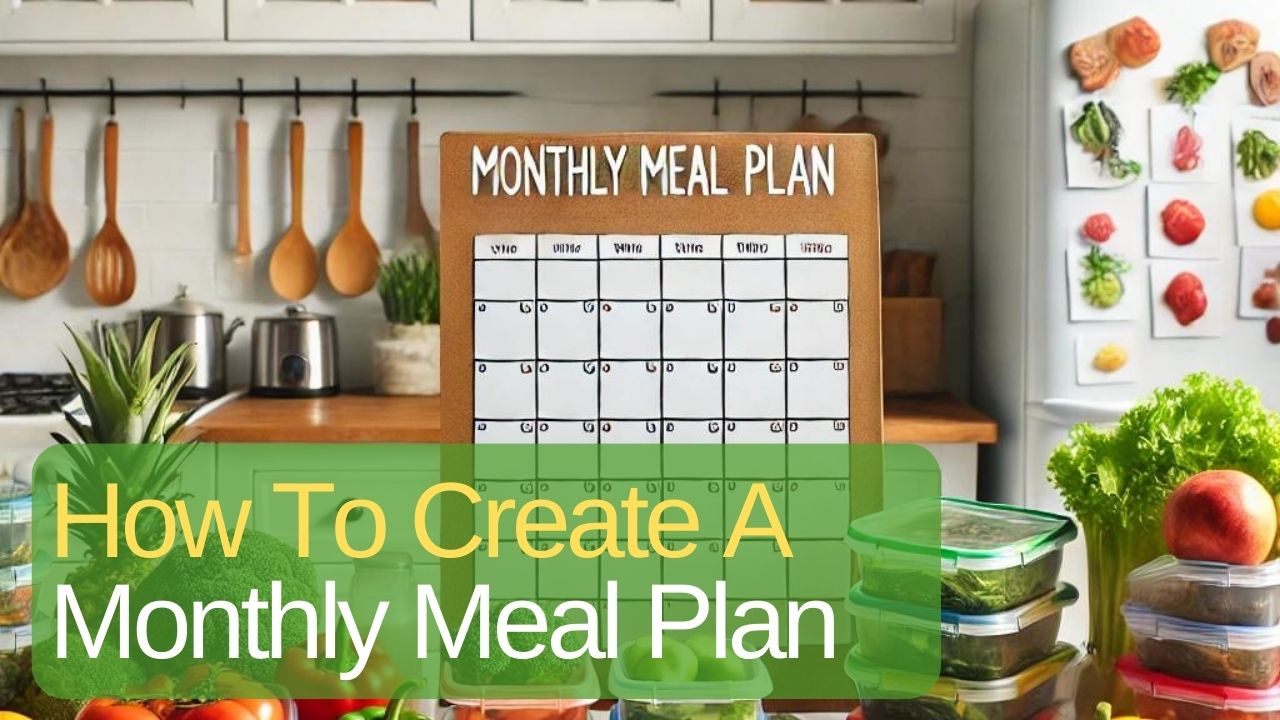Creating a monthly meal plan is a fantastic way to save time, reduce stress, and ensure you and your family eat balanced, nutritious meals. In this article, you will learn how to create a monthly meal plan effectively, along with practical advice and examples to get you started.

The Benefits of Having a Monthly Meal Plan
How to create a monthly meal plan is not just about organizing meals but also about reaping several benefits:
- Saves Time: Planning meals in advance eliminates the daily question of “What’s for dinner?” and reduces the need for frequent grocery shopping trips.
- Reduces Stress: Knowing what you will eat each day helps to reduce the stress associated with meal preparation.
- Promotes Healthy Eating: A well-thought-out meal plan ensures you include a variety of nutritious foods in your diet.
- Saves Money: Planning your meals helps avoid last-minute takeout and reduces food waste by using ingredients more efficiently.
Steps to Create a Monthly Meal Plan
Assess Dietary Needs and Preferences
Before you start planning, consider any dietary restrictions, allergies, or preferences. This will help ensure the meal plan is suitable for everyone in your household.
Plan Balanced Meals
Aim to include a variety of food groups in your meals. Balance proteins, carbohydrates, and fats, and ensure plenty of fruits and vegetables. This variety will help provide all the necessary nutrients.
Create a Shopping List
Once your meals are planned, make a comprehensive shopping list. Group items by category (e.g., produce, dairy, pantry staples) to make shopping more efficient. Don’t forget to check your pantry for items you already have to avoid unnecessary purchases.
Organize and Prepare Ingredients
Spend some time each week prepping ingredients. Chop vegetables, marinate proteins, and cook grains in advance. This will make cooking each meal quicker and easier.
Adjust the Plan for Flexibility
Life is unpredictable, so build flexibility into your meal plan. Plan for a few quick and easy meals that can be prepared with pantry staples, or allow for one night of takeout each week.
Tips for Staying on Track with the Meal Plan
- Stay Organized: Keep your meal plan visible (e.g., on the fridge) and update it as needed.
- Be Realistic: Plan meals you are comfortable making and that fit into your schedule.
- Stay Flexible: If something comes up and you can’t follow the plan exactly, don’t stress. Adjust as needed and get back on track the next day.
Example Meal Plans for Different Dietary Preferences
How to create a monthly meal plan for various dietary needs:
Vegetarian
- Week 1: Lentil soup, vegetable stir-fry, quinoa salad, veggie tacos, spinach and feta stuffed peppers.
- Week 2: Chickpea curry, eggplant parmesan, black bean burgers, vegetable pasta, tofu stir-fry.
Low-Carb
- Week 1: Grilled chicken with steamed broccoli, beef and vegetable stir-fry, shrimp salad, zucchini noodles with marinara sauce, baked salmon with asparagus.
- Week 2: Turkey lettuce wraps, cauliflower fried rice, spinach and cheese stuffed mushrooms, steak with green beans, chicken Caesar salad.
Family-Friendly
- Week 1: Spaghetti and meatballs, chicken fajitas, homemade pizza, beef stew, baked macaroni and cheese.
- Week 2: Tacos, grilled cheese and tomato soup, roast chicken with vegetables, sloppy joes, fish sticks with sweet potato fries.
Frequently Asked Questions about How to Create a Monthly Meal Plan
How can I make sure my meal plan is nutritionally balanced?
Include a variety of foods from all the food groups. Use resources like MyPlate or consult with a nutritionist to ensure you’re meeting your nutritional needs.
What if I don’t have time to cook every day?
Prep ingredients in advance or cook in bulk and freeze meals. Use slow cookers or instant pots for easy, hands-off cooking.
How can I stick to my meal plan when I’m busy?
Choose simple recipes, keep your pantry stocked with essentials, and allow for some flexibility in your plan to accommodate unexpected changes in your schedule.
Can I still meal plan if I have a very limited budget?
Absolutely! Meal planning can actually help you save money. Focus on affordable staples like beans, rice, and seasonal vegetables, and buy in bulk when possible.
How often should I update my meal plan?
It’s a good idea to review and adjust your meal plan weekly. This allows you to incorporate any new ingredients you have and adjust for any changes in your schedule.
Creating a monthly meal plan can seem daunting at first, but with these tips and steps, you’ll soon find it becomes second nature. Happy planning and happy eating!













